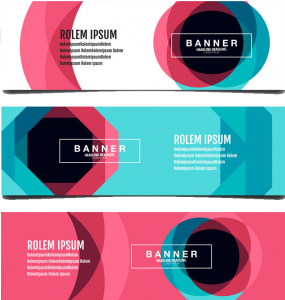Advertising is one of the easiest ways to make money from your website but it’s not about filling your page with random ads that don’t fit. What you really need is a reliable ad network that matches your site with ads people actually care about, and that pays you well for your niche. That’s where ad networks for publishers come in.
The good news? You don’t have to waste time searching all over the internet. We’ve already done the hard work and put together a fresh list of the best ad networks for publishers in 2025. This guide is always kept up to date, so you’ll never miss new opportunities or important changes. And hey, if you spot something we missed, let us know! We’ll happily update this list so it stays helpful for every blogger and website owner.
Table of Contents
ToggleWhat is an Ad Network?

An ad network is like a middleman that helps connect website or app owners with brands that want to advertise. Instead of you running around trying to sell ad space to every company one by one, the ad network does the heavy lifting. It gathers all the available ad spots from publishers and matches them with businesses looking to promote their products or services.
This is why ad networks for publishers are so valuable – they make it super easy to earn money from your site without spending hours chasing advertisers. Think of it as a smart shortcut: you focus on creating content, while the ad network takes care of bringing in ads that fit your audience. The best ad networks for publishers also make sure the ads run smoothly, so you can monetize your site in the most effective way.
How Ad Networks Work: A Publisher’s View

Think of ad networks as the “middleman” that connects your website or blog with advertisers who want to show their ads. Instead of you running around looking for companies to buy space on your site, the ad network takes care of everything — from selling ad spots to making sure you get paid.
As a publisher, you just sign up with an ad network, wait a bit for your website (or blog) to be approved, then copy and paste a small piece of ad code onto your pages. That’s it! The ads will start showing automatically, and you’ll begin earning money.
Now, here’s the cool part: you don’t even need a website to get started. If you have a social media page or blog, you can use something called a “Direct Link” (also known as a Smartlink). It’s just a simple URL you share with your audience, and when people click it, ads are shown — and you still get paid.
That’s why ad networks for publishers are such a game-changer. They make it super simple to monetize your content without the stress of finding advertisers yourself. The best ad networks for publishers also provide you with tools, stats, and ad options to help you optimize placements and boost your revenue.
Benefits of Ad Networks for Publishers

The best thing about ad networks for publishers is that they make life way easier. Instead of chasing brands or stressing over how to sell your ad space, these networks handle the hard part for you. They already have advertisers lined up and just connect them to your site or blog once you’re approved.
Here are some clear benefits:
#1. No stress, no hustle – You don’t need to beg or pitch brands for ads. The network does the matchmaking for you.
#2. Ready-to-go advertisers – There’s already a pool of advertisers waiting. You just plug in and start earning.
#3. Fair shot for small publishers – Even if your site is small or new, you still get access to opportunities you’d never land on your own.
#4. Saves time and energy – Forget wasting hours sending emails and negotiating. You can focus on creating content while the ads run.
#5. Simple setup – Copy a code or use a link, and you’re good to go. Money starts rolling in without complicated tech stuff.
That’s why so many people, especially beginners, rely on ad networks for publishers — it’s like having a shortcut straight to ad revenue without all the hassle.
Types of Ad Networks
Not all ad networks are the same. They’re grouped based on things like niche, size, number of ads they manage, and how those ads are delivered. Let’s break down the most common types of ad networks for publishers in simple terms:
#1. Premium Ad Networks
Think of this as the VIP section. Premium ad networks only allow top-quality publishers inside, and they usually pay the highest rates. They often have strict entry rules — like needing a lot of traffic or being in a specific niche.
Because of their exclusivity, they connect you with high-paying advertisers who are picky about where their ads show up. If you get accepted, the reward is big: your audience gets ads they actually care about, and you earn serious money in return.
#2. Vertical Ad Networks
Vertical ad networks focus on just one industry or niche. For example, a travel ad network would only connect advertisers in the travel world with publishers who write about travel.
This laser-focus is powerful. Even though there might not be tons of ads available, the ones that do appear usually convert really well because they’re so specific. Advertisers get their perfect audience, and publishers like you earn more for every click or sale.
#3. Horizontal Ad Networks
Horizontal ad networks are the opposite of vertical ones. Instead of focusing on one niche, they spread across almost every topic. This makes them perfect for publishers who just want to fill up their ad space quickly.
The ads might not be as perfectly targeted as vertical ones, but the high volume makes up for it. You’ll almost never have empty slots on your site because advertisers from different industries are always available.
#4. Affiliate Ad Networks
Here, it’s less about showing random ads and more about promoting specific products or services. As a publisher, you put up links or banners for these products, and when your readers buy something (or take another action like signing up), you earn a commission.
Affiliate ad networks also give you reporting tools and even training to help you do better. It’s a win-win — the advertiser makes a sale, and you pocket a nice cut of the profit.
#5. Fashion Ad Networks
Now let’s talk about one of the most exciting types — fashion ad networks. These focus purely on clothing, accessories, beauty products, and lifestyle brands. If your website or blog is about style, beauty, or trends, fashion ad networks are a goldmine.
They connect you with big-name brands and even up-and-coming designers looking to showcase their collections. Because fashion is a high-demand industry with loyal audiences, advertisers are willing to pay well to get their ads in front of the right crowd.
If you’re running a fashion blog, YouTube channel, or Instagram page, plugging into a fashion ad network is one of the smartest ways to monetize your content.
Other Types of Ad Networks Worth Noting
Besides the big ones above, there are also:
Business ad networks
Video ad networks
Technology ad networks
Automotive ad networks
Remnant ad networks (for leftover ad inventory)
All of these are still ad networks for publishers that help connect you with the right advertisers and give you a chance to earn. The key is choosing the one that fits your niche and your audience best.
Top Ad Networks for Publishers in 2025

There are thousands of ad networks out there, but only a handful truly deliver value. In this guide, we’ll break down the best ad networks for publishers and blog owners in 2025, covering options across different niches so you can pick the one that works best for your site.
#1. AdsTargets
Great for publishers seeking flexibility and multiple ad formats
Pros
Supports a wide variety of ad formats—banner, text, native, interstitial (full-screen), in-app, affiliate, and eCommerce ads.
Offers an impressive range of pricing models—CPC, CPM, CPA, CPV, CPD—so you can mix and match what earns you the most.
Lower payout threshold of $35 and flexible payment methods (PayPal, wire), making it more accessible for smaller publishers.
Advanced targeting options—like geography, device, OS, browser, interests, and even whitelist/blacklist—letting publishers fine-tune who sees their ads.
Cons
Mixed user feedback—while some praise its potential for small publishers, others report issues with payouts, account blocking, or lack of support.
Less brand recognition and strict vetting compared to giants like Google AdSense, so trust and reliability can vary.
Why AdsTargets Stands Out
AdsTargets is one of the most versatile ad networks for publishers, especially if you’re looking for flexibility with ad formats and monetization models. Whether you want to test banner ads, display video, or affiliate links, you’ve got the tools—and lower thresholds—to get started without waiting to hit high payout limits.
That said, some publishers have warned about inconsistent payments and support. So it’s smart to proceed cautiously: start small, test the setup, and build confidence before fully committing your ad strategy.
Pricing Models: CPC, CPM, CPA, CPV, CPD
Minimum Payout: Approximately $35
Payment Methods: PayPal, Wire Transfer
Ad Formats Supported: Banner, Text, Native, Interstitial, Video, In-App, Affiliate
#2. Google AdSense
Best for beginner-friendly publishing
Slug: ad-network-best-for-publisher-google-adsense
Pros
Huge ad inventory to choose from
Clean, easy-to-use dashboard
Supports multiple ad formats
Option to work with Google Certified Publishing Partners (GCPP)
Cons
Strict rules about website content
High payout threshold ($100)
What makes Google AdSense stand out?
Google AdSense is one of the biggest and most popular ad networks for publishers, with hundreds of thousands of websites already signed up. It’s super beginner-friendly, which makes it perfect if you’re just starting out as a blogger or website owner. The platform automatically matches ads to your site, so you don’t have to stress about finding advertisers on your own.
However, it’s not always the best for niche publishers. If your blog covers very specific topics, you might find the payouts lower compared to some AdSense alternatives. Plus, earning enough to reach that $100 minimum payout can take time, especially for smaller sites.
The good news is, AdSense is ridiculously easy to set up and supports many different ad formats—making it one of the most reliable ad networks for publishers who want a simple way to monetize.
Models offered: CPC (cost-per-click), CPM (cost-per-thousand impressions), and CPE (cost-per-engagement).
Traffic requirement: No strict minimum traffic, but sites with very little traffic might be rejected.
Payout methods: Wire transfer, check, and electronic funds transfer.
#3. PropellerAds
Pros
Low payment threshold
Easy to get approval
In-depth analytics and reporting
Cons
No real-time bidding
PropellerAds is one of the more popular ad networks for publishers, and for good reason. With over 100,000 users worldwide, it makes monetization simple for anyone running a blog or website. Advertisers can reach audiences in more than 195 countries, and advanced anti-fraud tools help keep the ads safe and reliable.
The best part? You don’t need massive traffic to get started. Once approved, publishers can begin earning right away. PropellerAds offers different ad formats like popunders, interstitial ads, and push notifications—so you’re not stuck with just one type of placement. The ability to run multi-format campaigns is a huge plus because it increases the chances of serving ads that actually get clicks and bring in revenue.
This ad network delivers a staggering 12 billion ad impressions per day. For publishers, that simply means there are plenty of opportunities to earn.
Models: CPM, CPC, CPA
Minimum traffic: None
Payout methods: PayPal, WebMoney, Skrill, Payoneer, wire transfer, and ePayments
If you’re looking for ad networks for publishers that don’t make things complicated, PropellerAds is one to seriously consider. It’s straightforward, flexible, and open to sites both big and small.
#4. Amazon Publisher Services
Pros
High-paying ad offers
Simple and user-friendly interface
Cons
Tough vetting process (not every website gets in)
Amazon isn’t just the giant online shop we all know — it also runs one of the most powerful ad networks for publishers. With Amazon Publisher Services, you get a unified ad marketplace that directly connects your website to advertisers, especially big brands that already sell on Amazon. The cool part? Amazon doesn’t charge you fees, so what you earn stays in your pocket.
This platform is great because it gives publishers unlimited access to high-quality advertisers who are ready to pay well. The dashboard is easy to navigate, so you can quickly track how much money your ads are bringing in. Even better, you don’t need a set amount of traffic to join, making it accessible for both small and big publishers.
The catch? Amazon is picky. The vetting process is strict, and not all websites make it through. But if your site gets accepted, you’ll enjoy premium ad placements and solid earnings compared to many other ad networks for publishers.
Models: CPC (cost per click) and CPA (cost per action).
Minimum traffic: None.
Payout methods: Wire transfer, check, and electronic funds transfer.
#5. RevenueHits
Pros
Supports a wide variety of ad formats
Covers plenty of ad niches
Super easy to sign up and start using
Cons
Reporting tools are quite limited
RevenueHits (now known as Intango) is one of the more popular ad networks for publishers, and it’s got the numbers to back it up — over 5,000 advertisers and 20,000 publishers are already onboard. What makes it stand out is the promise of a 100% fill rate, meaning every bit of your ad space can be monetized.
The network supports a ton of ad formats, including sticky ads, popunders, in-page push, banners, and more. This flexibility makes it easier for you to match ads to your site’s layout without ruining the user experience. Signing up is straightforward and quick, so you don’t have to jump through hoops just to get started.
RevenueHits is especially friendly to beginners because it doesn’t require a minimum traffic level. Whether your website is new or already booming, you can still start earning. On top of that, they offer competitive rates and regular payouts, which is a huge plus for cash flow. Compared to other ad networks for publishers, RevenueHits stands out for its variety and ease of access, even if its reporting dashboard isn’t the most advanced.
Models: CPM, CPC, CPA, CPI, and CPL.
Minimum traffic: None.
Payout methods: Wire transfer, PayPal, and Payoneer.
#6. TrafficStars
Pros
High-paying ads
Lots of different ad formats
No traffic requirements to join
Cons
Doesn’t cover as many advertising niches as some competitors
TrafficStars is a self-serve platform that gives publishers access to multiple ad formats like sliders, interstitials, video pre-rolls, banners, and push ads. What makes it shine compared to many other ad networks for publishers is its Real-Time Bidding (RTB) system. With RTB, advertisers bid for your ad spots in real time, which drives up competition. More competition means you, as the publisher, can earn more money since advertisers are pushing for the best placement on your site.
Another win? You don’t need a huge audience or minimum traffic to get started. Even small websites can jump in and start monetizing right away. The payout options are flexible too, ranging from traditional bank transfers to digital currency and even platforms like Paxum.
If you’re exploring different ad networks for publishers, TrafficStars is a solid pick for anyone who wants to take advantage of competitive bidding and enjoy higher ad revenue without needing massive site traffic.
Models: CPM, CPA, and CPC.
Minimum traffic: None.
Payout methods: Bank transfer, digital currency, ePayService, Paxum, and more.
#7. Publift
Pros
Super high fill rates (your ad space rarely goes empty)
Amazing customer support
Works smoothly with other big ad networks
Cons
Only accepts publishers that meet strict entry requirements
Publift is often ranked among the best ad networks for publishers because it doesn’t just serve ads—it helps you maximize every ad impression with a tailored strategy. Think of it like having a personal coach for your ads. Whether you’re running a website or an app, Publift supports a variety of formats, including sticky ads that stay visible as users scroll, standard banners, vignettes, and multiplex ads.
One of its strongest features is how it connects you to both its own ads and those from heavyweight partners like AdSense, Xandr, and Amazon Publisher Services. This gives you more variety and better chances of showing high-paying ads that match your audience.
The catch? Publift isn’t for beginners. To get in, you need at least 500,000 monthly page views or must already be making around $2,000 per month. This selective approach ensures advertisers get quality traffic and publishers who qualify can command premium rates.
If you’re already established and want to squeeze every dollar out of your ad space, Publift is one of those ad networks for publishers that can really transform your revenue.
Models: CPM, CPC, CPA, CPI, CPL
Minimum traffic: 500,000 monthly page views or $2,000+ monthly earnings
Payout methods: Bank transfer
#8. Adcash
Pros
Gives you access to relevant, well-targeted ads
Easy-to-use platform with a clean dashboard
Cons
CPM rates can be lower compared to some rivals
Adcash is an Estonian-based ad platform that has grown into one of the go-to ad networks for publishers who want global reach without strict entry barriers. It works with publishers worldwide and supports a variety of ad formats such as popunders (ads that open behind a browser window), classic banners, interstitials (full-page ads), and a smart feature called autotag that makes setting up ads quick and stress-free.
What makes Adcash stand out is its accessibility. Unlike many other ad networks for publishers that demand massive traffic numbers, Adcash has no minimum traffic requirement. This makes it an excellent starting point for smaller websites while still being powerful enough for bigger publishers. On top of that, each publisher gets help from a dedicated account manager, meaning you won’t be left scratching your head trying to figure things out alone.
Sure, its CPM rates may not always hit the highest benchmarks, but the trade-off is flexibility, ease of use, and the chance to grow your ad revenue at your own pace. If you want an ad network that welcomes you whether you’re just starting or already established, Adcash is a solid pick.
Models: CPM, CPC, CPA
Minimum traffic: None
Payout methods: Wire transfer, PayPal, Digital currencies
#9. Clickadu
Pros
Lots of different payout methods to choose from
Almost perfect ad fill rate (so your ad spaces don’t go empty)
Access to premium, high-paying ads
Cons
High minimum payout
Requires significant daily traffic
Clickadu has made a name for itself as one of the more premium ad networks for publishers who are serious about monetization. With over 3,300 publishers onboard and more than 4 billion ad impressions served every single day, this platform is not playing small. It offers a wide range of ad formats like video ads, display ads, in-page push, and the ever-popular popunders. The best part? Clickadu’s ad fill rate is close to perfect, meaning you rarely have to worry about your ad slots being left empty.
What makes Clickadu shine is its ability to connect you with higher-paying campaigns, so publishers with strong traffic can see solid earnings. But here’s the catch: it’s not beginner-friendly. Unlike some other ad networks for publishers that allow anyone to join, Clickadu requires you to have at least 5,000 daily visits to qualify. That high bar means it’s best suited for established blogs, content-heavy sites, or publishers who already have a steady stream of visitors.
Yes, the minimum payout might feel a bit steep, but the trade-off is worth it if your site has the numbers. Think of Clickadu as the kind of ad network you “graduate” to once your traffic game is strong enough to play in the big leagues.
Models: CPM, CPC, CPA
Minimum traffic: 5,000 daily visits
Payout methods: Wire transfer, WebMoney, Paxum, PayPal
#10. PopAds
Pros
Real-time reporting so you see earnings instantly
No minimum traffic requirements (great for small publishers)
Specializes in high-paying popunder ads
Cons
Reporting tools are a bit limited
Only supports one ad format (popunders)
PopAds is one of those ad networks for publishers that keeps things super simple. Instead of juggling multiple ad types, PopAds focuses only on popunder ads—the kind that quietly open underneath your active browser window instead of interrupting your screen. Why does that matter? Because popunders tend to pay better than most other ad formats and are harder for ad-blockers to stop. That means more money in your pocket and more reach for advertisers.
This platform works worldwide, with advertisers in over 40 countries, so your ads aren’t just limited to local traffic. To put the potential into perspective: PopAds claims that publishers can earn around $4 for every 1,000 unique U.S. visitors. That may not sound like much at first, but it can add up fast if your site is getting steady traffic.
Unlike some strict ad networks for publishers that demand high traffic numbers, PopAds has no traffic requirement at all. Whether your site is brand new or already buzzing with thousands of daily visitors, you can get started right away. It’s especially friendly to beginners who are just learning the ropes of monetization.
Payments are also flexible. You can cash out through Payoneer, PayPal, or wire transfer, making it easy to actually enjoy the fruits of your traffic.
Models: Cost-per-mille (CPM)
Minimum traffic: None
Payout methods: Payoneer, PayPal, Wire Transfer.
Conclusion
At the end of the day, the best ad network for publishers isn’t just the one with the biggest name—it’s the one that fits your site, niche, and audience. Whether you’re running a brand-new blog, a high-traffic news site, or even a fashion-focused platform, there’s a network out there designed to help you earn without drowning in technical headaches.
Think of it this way: your content is the star of the show, and ad networks are the backstage crew making sure everything runs smoothly (and profitably). Start small, test a few platforms, track your results, and then double down on the ones that work best for you.
The online ad world is always changing, but one thing stays the same—publishers who stay curious, flexible, and willing to experiment always end up ahead.
So go ahead, pick a network, plug it in, and let your content start working harder for you. Your next big revenue stream could be just a few clicks away.








